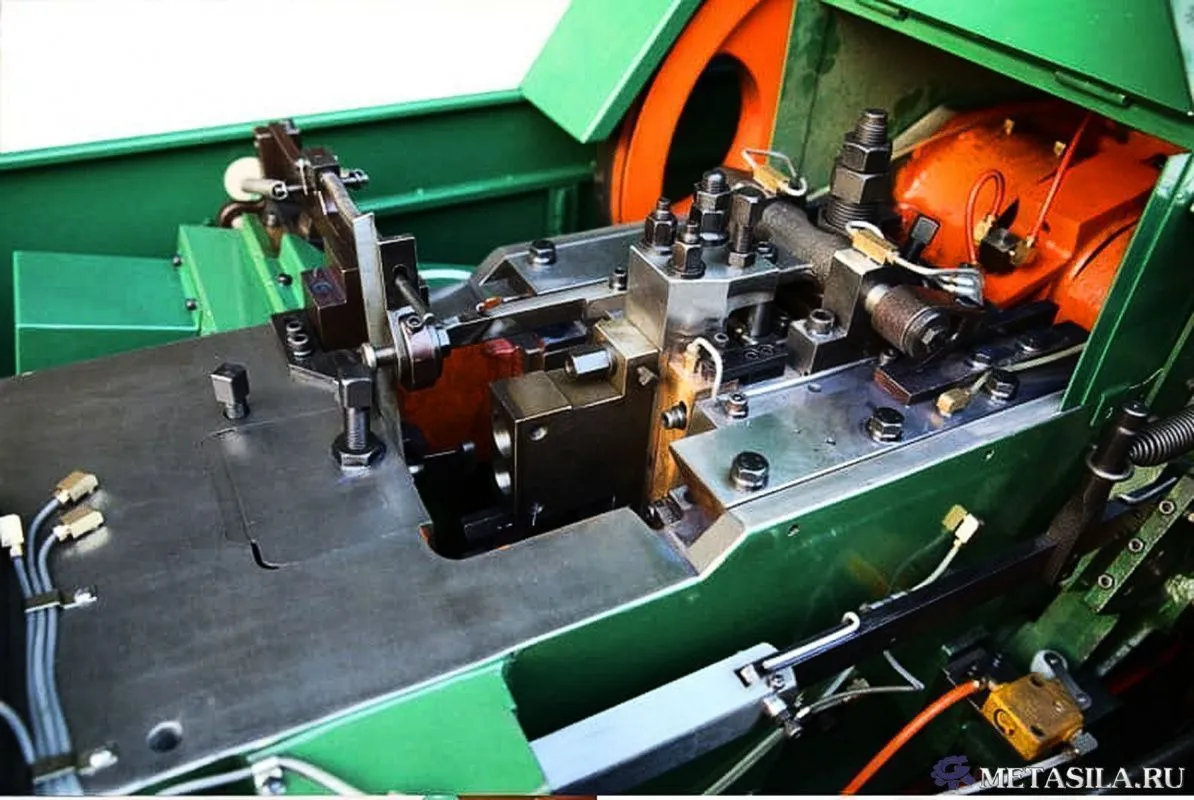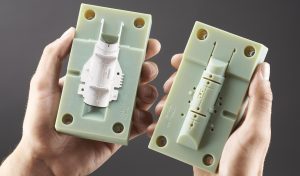Riveting machinery allows manufacturers to set rivets in a repeatable manner. Whether it’s for brake linings for cars and airplanes, metal brackets or window and door furniture, riveting machines are used across industries to fasten materials together.
Riveting machines typically work with either impact or orbital forming technology. Both of which work with force-displacement technologies as illustrated in Fig 8.1 from Orbitform.
Power Source
Riveting machines need an external power source such as hydraulics, pneumatics, or electricity to punch rivets into the metal sheets. This power source determines the operation of the machinery. Riveting machines are available in a wide range of sizes, from small hand riveters to multihead automated ones. The different types of riveters are based on the type of materials and the level of automation desired.
Some riveting machines have dedicated sensors to monitor the setting force and punch movement throughout the riveting process. These sensors generate a force-displacement curve and compare it with a trained reference curve. If the curve fits within a certain tolerance, the machine is considered to be working correctly and passes inspection. These systems can be equipped with a variety of sensors, including one positional sensor to locate the punch and up to two pressure sensors to measure the clamp and punch pressures. The type of sensor used depends on the model of the riveting machine.
Speed
When it comes to selecting the best rivet machine for your assembly process, there is a lot to consider including the amount of automation you need, desired speed and the materials to be assembled. It is important to work with a machine manufacturer that offers several varieties of rivet machines and can offer unbiased advice regarding the best fastening method for your product assembly needs.
For example, if your assembly involves fragile materials or small rivets then you might benefit from an orbital forming or radial riveting process. These methods provide a much better control over the assembly force being applied and can achieve high quality results in less time than impact riveting.
On the other hand, if your manufacturing involves hard materials that must be upset then you might want to use a hot upset riveting system. These can often be set up in a robotic cell to increase your production efficiency. Rivet monitoring systems are also available to help you evaluate the performance of your riveting machines. These systems use dedicated sensors to monitor the setting forces and punch movements throughout the riveting process, producing a force-displacement curve that can be compared to a trained reference curve.
Tooling
The tools that make a machine function are called tooling. It can be as simple as a muffin tin and many consumer products cannot be made without it. Whether it is a jig, die, or mold, the proper tooling makes or breaks production. It can also affect the tolerance and quality of a finished product.
A well-engineered machine must balance speed, cost, accuracy, and quality in order to perform efficiently. In the case of metal forming, a proper tool design allows for shorter cycle times and lower cost.
It is important to regularly assess the condition of punches and dies. This is because granulate can build up over time, resulting in poor tablet weight. This can be prevented by visual assessment and regular cleaning. High-magnification lenses are ideal for this assessment as it offers high-quality imagery that identifies any contamination. This allows for a thorough cleaning and reduces production downtime. It can also help prevent any damage or deterioration to the tooling.
Safety
Riveting machines can be used to bind a wide variety of materials together with metallic fasteners called rivets. While there are many advantages of riveting machinery, there are also some safety measures and procedures that need to be followed to ensure worker safety.
The primary risk associated with riveting machinery is injury from projectiles such as nails, rivets and staples that can be ejected at high speeds. These projectiles can cause serious injuries to the hands, legs and knees.
There are many different types of riveting equipment available on the market. These range from manually operated handheld riveting guns to multi-head automated machines that are electrically, pneumatically (pop riveters and air riveters) or hydraulically actuated. Most of these riveting tools and machines can install one or multiple rivets at a time. They can also be configured to install different sizes of rivets. Some machines, like those produced by Henrob and Bollhoff, come equipped with monitoring systems for the quality of the riveting process.



